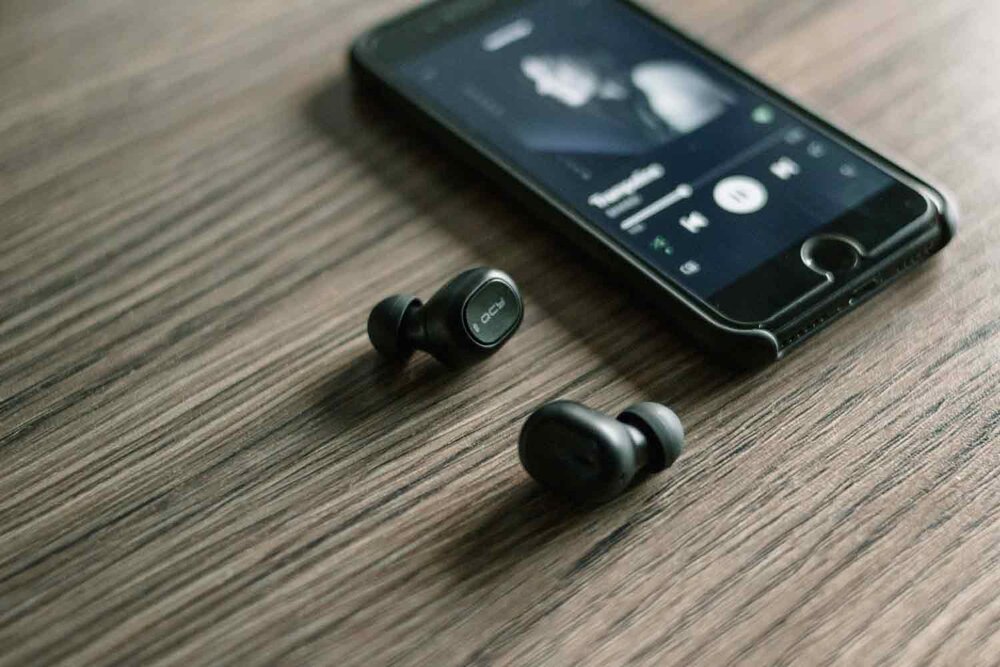EARBUD DEBATE: I HEARD YOU THE FIRST TIME

A lot of us fall into the bad habit of using low-quality ear buds to listen to our music — often because they come with our phones or they’re a cheap replacement.
The form factor and build of the tech you listen to music on — ear buds, over/on ear headphones or the isolating versions of those — matters if you care about high-quality sound and avoiding hearing loss.
One thing I do to capture the excellence of the music I love is to invest in high-quality and high-fidelity equipment, so you get the same feeling and quality at lower decibels (dBA) as you might otherwise get when cranking that volume up to eleven.
Earbuds: conventional, isolating, wireless, wired
With the advent of smartphones came the rise of earbuds as an almost default way of listening to tunes. Apple’s earlier iPod and iPhone campaigns standardized their classic white buds as a staple of twenty-first century fashion. The early days transformed earbuds from a simple tech device to an accessory, but with their popularization came some problems.
Conventional earbuds have no suction or isolating rubber, and sit freely in your ears. However, a lot of companies include sound-isolating rubber to help isolate your music from others and keep the sound unpolluted. For the longest time these were wired because of battery and tech limitations, but more recently we’ve seen the introduction of wireless Bluetooth versions with some major players like Bose and their SoundSport model, as well as Apple’s AirPods. Any way you hack it – wireless, wired, isolating, or not – earbuds are limited by their tiny form factor and the physics of currently available tech in their ability to push out high fidelity music and sound. This means that, subconsciously, you’re more likely to compensate for poor sound quality by blasting the music and exceeding the audiologist-recommended threshold of 85 dBA.
The key advantage to these is sheer convenience, considering they tuck into a pocket and take up next to no space or weight, but no audiophile will ever tell you that earbuds are their preferred method of listening. While technically inferior, some prefer earbuds because they don’t give you that big, clunky look, mess with your hair or hat, or obscure your ears or face. They’re sleek and easy to hide or tuck away, especially the wireless ones.
Headphones: on-ear, over-ear, noise-cancelling, wireless, wired
Originally an invention of the early twentieth century for the US Navy, headphones come in a lot of forms, but they’re generally considered to be a superior way to listen to tunes. The two major types are on-ear and over-ear, but in these two types, headphones can include pretty incredible technology, including noise-cancellation. The unique ability of many headphones to pump out excellent, high fidelity sound derives from the simple fact that they have more space to stuff the tech into. Headphones are often quite large in their over-ear full size, though on-ear cans compromise size and ability to isolate sound for smaller form factor. Indisputably, companies like Sennheiser and their HD series produce the epitome of sound technology when it comes to headphones.
The chief drawback to full-sized headphones is that they get in the way. They take up a lot of space, and a lot of them generally look pretty dorky. Most fashionistas don’t choose to use headphones for these reasons, but they became trendier with Dr. Dre and Monster’s Beats campaign and line of what they referred to as ‘studio quality’ headphones. Since the early aughts and Beats’ entry onto the listening scene, other companies have made far better-looking, transportable, and more compact models. Some fierce competition has been going on in the noise cancelling tech part of this. For a long time, a favourite and fashionable wireless set was the Bose QuietComfort series, but as of 2018 many audiophiles would tell you the Sony WH-1000XM3 has surpassed Bose in just about every category, including their sleek look.
Unlike earbuds, the limitations on full headphones sets are far less, though wireless sets’ reliance on Bluetooth tech means they can’t achieve the audio bliss of their wired cousins. Considering the high-quality sound, you’re more likely to restrain your listening to the safe dBA range, so headphones are, by default, safer to use for your hearing than earbuds.
Photo By Zarak KhanPodcast
Contests & Promotions
















